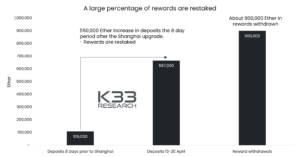
- Bitcoin has been struggling due to regulatory uncertainties in the US, while European legislators have passed promising crypto-related rules.
- Mark Connors, head of research at Canadian crypto asset manager 3iQ, links the decline in bitcoin to the regulatory turmoil in the US and market liquidity heavily tilted towards Asia.
- European legislators have passed the landmark Markets in Crypto-Assets (MiCA) regulatory framework and a separate crypto-related rule known as the Transfer of Funds regulation, which imposes stronger surveillance and identification requirements for crypto operators.
As the crypto market continues to experience a downward trend, U.S. regulators are struggling to come up with an effective regulatory approach for digital assets. The largest cryptocurrency by market capitalization, Bitcoin, has been on a two-day decline, falling below $28,000 at one point, with the head of research at Canadian crypto asset manager 3iQ linking its decline to U.S. regulatory woes.
Mark Connors noted that “market liquidity remains heavily tilted to Asia,” indicating that the downswing of bitcoin was expected to begin as markets in that part of the world closed. Moreover, Coinbase’s decision to get licensed in Bermuda to launch an exchange as early as next week shows that U.S. digital asset companies are now voting with their feet, he said.
U.S. Crypto Regulations Lagging Behind Europe as Bitcoin Struggles
In contrast, European legislators have passed crypto rules, including the Markets in Crypto-Assets (MiCA) regulatory framework and the Transfer of Funds regulation, which impose stronger surveillance and identification requirements for crypto operators. The laws, which will be enforced at the state level, represent a crucial step forward for the crypto industry and the first major attempt to provide a comprehensive set of rules for crypto companies so that they know in advance what they can and cannot do, and where their responsibilities lie if they want to operate in the 27-nation strong trading bloc.

MiCA requires crypto firms, such as wallet providers and exchanges, to be licensed by the EU and to comply with money laundering and terrorism finance safeguards if they want to serve EU-based customers. However, some have balked at the reporting standards, which weaken privacy for crypto users in the name of customer safety and national security.
MiCA and Transfer of Funds: Europe’s Push for Comprehensive Crypto Regulations
The European Union hopes that MiCA sets the global standard and is worried about its effectiveness in the EU if similar rules are not adopted everywhere. Nevertheless, it provides a promising regulatory foundation for digital assets, which is currently lacking in the U.S. where regulatory efforts remain disjointed and counterproductive.
The Kabuki theatre that unfolded in Washington this week suggests that Asia and other jurisdictions will continue to gain market share from the U.S., Connors wrote to ETHNews, adding:

So this week we had both price and regulatory volatility, with only one clear loser, the U.S. economy.
As the U.S. regulatory agencies seem to be backtracking in their efforts to find an effective regulatory approach, more volatility is likely in store, but not the year-to-date ‘upside’ volatility seen in 2023, Connors wrote.
As investors remain warily watchful, given the decline of a number of important economic indicators that may foreshadow recession, cryptocurrency investors are becoming more fretful than upbeat about the path forward. Recent jobs data has indicated a fall-off in the torrid employment market, and on Thursday, the National Association of Realtors monthly report showed home prices registering their biggest decline since 2012 and mortgage rates rising.
Despite the decline in the crypto market, investors continue to show interest in assets that hold their value in good times and bad. Gold, for instance, has hovered comfortably over $2,000. The decline of the crypto market can also be attributed to the massive sell-off on Binance and a hot U.K. inflation report.
While the decline of Bitcoin and other cryptocurrencies may cause concern for some investors, it is worth noting that the crypto market is still in its infancy and is subject to considerable volatility. Nevertheless, the current regulatory uncertainty in the U.S. underscores the need for a more comprehensive and effective regulatory approach to digital assets, which will provide investors with greater confidence in the market and contribute to the overall growth of the industry.
The post Bitcoin’s Price Tumbles: From $31,000 to $25,000 – What’s Next for BTC? appeared first on ETHNews: Bringing you the news of everything blockchain, Ethereum, and the internet..


